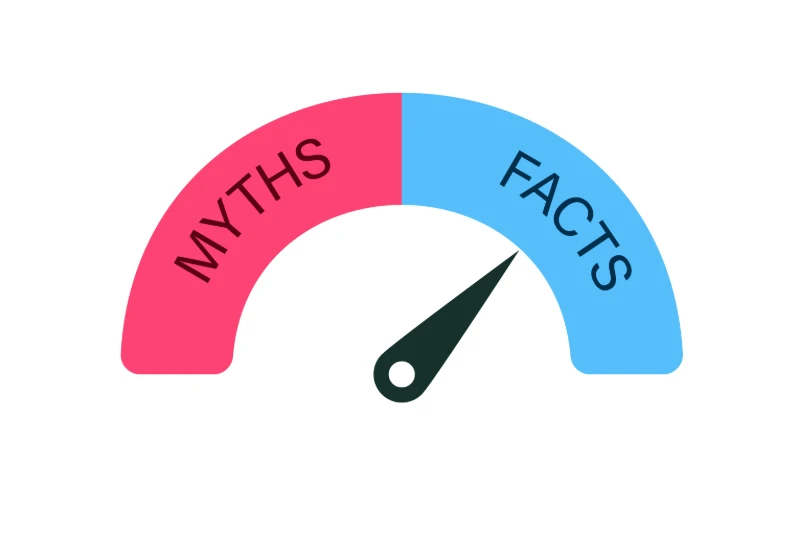Why Spring is a Prime Time for Real Estate Spring consistently ranks as one of…
What You Need To Know About APOR Mortgage Regulations in 2024
What You Need To Know About APOR Mortgage Regulations in 2024
As the financial landscape adapts to new challenges, the Consumer Financial Protection Bureau (CFPB) has overhauled the Average Prime Offer Rates (APOR), critical in the APOR mortgage sphere. This significant update acknowledges the necessity for more resilient mortgage rules following the implications of data source changes, such as the discontinued data from Freddie Mac’s survey, emphasizing the need for Colorado Springs homeowners and 719 Lending clients to stay informed. Your understanding of APOR’s revised methodology and its influence is pivotal to navigating the evolving market.
Shifting into 2024, these changes will play a vital role for both lenders and borrowers, shaping the terrain of mortgage regulations. As your trusted partner, 719 Lending provides a handy calculator at ffiec.cfpb.gov/tools/rate-spread to check current APOR rates, ensuring you’re up to speed. This article aims to guide and prepare you for the impacts of these adjustments, ensuring your decisions are well-informed. We invite you to stay ahead of the curve and visit us at www.719lending.com for personalized assistance in Colorado real estate financing.
Understanding APOR
Understanding the Average Prime Offer Rates (APOR) is essential for both lenders and borrowers in the mortgage industry. Here is a breakdown of its key aspects:
- APOR Definition and Purpose: The Average Prime Offer Rates represent a benchmark in mortgage lending, reflecting the annual percentage rate derived from average interest rates, points, and other loan pricing terms offered to consumers with low-risk pricing characteristics. APOR is pivotal in determining whether a loan is considered a higher-priced mortgage loan (Consumer Financial Protection Bureau).
- CFPB’s Role and Weekly Updates: Published by the Consumer Financial Protection Bureau, APOR covers a broad range of transaction types and is updated weekly. This ensures lenders and borrowers are working with the most current information for their mortgage decisions (Federal Financial Institutions Examination Council).
- Revised Methodology for APOR Calculation: Starting April 21, 2023, the CFPB has adopted a revised methodology using ICE Mortgage Technology data. This change was necessitated by the unavailability of certain data previously used to calculate APORs, affecting the spread between a loan’s annual percentage rate and the APOR (National Mortgage Professional).
For real-time APOR rates, utilize the rate spread calculator provided by the FFIEC, and for personalized assistance in Colorado real estate financing, visit 719 Lending.
Regulatory Background of APOR
The regulatory background of APOR is a testament to the continuous evolution of mortgage regulation, ensuring that lending practices remain fair and transparent. Here are the key regulatory milestones and their implications for the APOR mortgage landscape:
- Transition to New Data Source: The CFPB now calculates APOR using data from ICE Mortgage Technology, a shift initiated on April 21, 2023, to mitigate the risk associated with relying on a single data provider.
- Addressing Systemic Risks: The move to a new methodology for APOR calculation by the CFPB aims to eliminate single points of failure and reduce the complexity that previously existed when data sources like Freddie Mac ceased providing necessary information.
- Feedback and Future-Proofing: The CFPB is actively seeking feedback to develop long-term solutions that bolster APOR’s resilience and streamline its calculation process.
- Legislative Foundation: APOR is rooted in the Home Mortgage Disclosure Act (HMDA), which mandates the publication of APOR rates for various loan types, critical for HMDA reportable loans’ rate spread calculations, as outlined in Regulation C, effective January 1, 2018.
- HOEPA and Dodd-Frank Act Amendments: The Dodd-Frank Wall Street Reform and Consumer Protection Act of 2010 significantly amended HOEPA, expanding protections against abusive lending and introducing new thresholds for high-cost mortgages.
For current APOR rates, the rate spread calculator at ffiec.cfpb.gov/tools/rate-spread is an invaluable tool. To navigate these regulatory waters in the Colorado Springs real estate market, trust 719 Lending. Visit www.719lending.com for expert guidance and to ensure your mortgage decisions are informed and compliant with the latest APOR regulations.
Changes to APOR in 2024
In 2024, the landscape of APOR mortgage regulations will experience significant changes that will impact both lenders and borrowers. These adjustments are designed to reflect economic shifts, specifically the effects of inflation:
- Regulation Z Threshold Adjustments:
-
- For high-cost mortgages, the points and fees thresholds will be set at 5% of the loan amount for loans of $26,092 or greater.
- For loans under $26,092, the threshold will be the lesser of 8% of the loan amount or $1,305. This is a crucial update that lenders must integrate into their pricing strategies to maintain compliance (Wisconsin Bankers Association).
- Qualified Mortgage (QM) Pricing Test Amendments:
-
- The amendments will introduce different Annual Percentage Rate (APR) limits that are contingent on loan amounts for both first lien and subordinate lien loans. These changes are essential for lenders to accurately assess loan product offerings (High Priced Loans News).
- QM Points and Fees Test Caps:
-
- The new caps will redefine the maximum allowable points and fees that can be charged, aligning with the updated regulations. It is imperative that lenders adjust their loan pricing to fall within these new parameters.
For an immediate understanding of how these changes may affect current mortgage offers, the rate spread calculator is a valuable tool. It provides up-to-date APOR rates, essential for lenders and borrowers to determine the competitiveness and compliance of mortgage products.
At 719 Lending, we are committed to helping you navigate these regulatory changes in the Colorado Springs real estate market. Visit our website at www.719lending.com for personalized assistance and to ensure your mortgage decisions are informed, compliant, and optimized for the best outcomes.
- The new caps will redefine the maximum allowable points and fees that can be charged, aligning with the updated regulations. It is imperative that lenders adjust their loan pricing to fall within these new parameters.
Impact on Lenders and Borrowers
As the Consumer Financial Protection Bureau (CFPB) prepares to eliminate the “GSE Patch,” the impact on lenders and borrowers within the Colorado Springs real estate market is set to be substantial. Here’s what you need to know:
- For Lenders:
-
- Compliance Adjustments: Lenders will need to realign their loan products with the new APOR regulations, ensuring they do not rely on the GSE Patch, which previously allowed certain loans to qualify as Qualified Mortgages.
- Risk Assessment: The removal of the GSE Patch will necessitate a more rigorous assessment of loan applications, as lenders will have to thoroughly evaluate borrowers’ ability to repay without the assumptions previously granted by the GSE Patch.
- For Borrowers:
-
- Qualification Criteria: Borrowers may find it more challenging to qualify for certain mortgage products, as the elimination of the GSE Patch could mean stricter lending standards and less flexibility in loan qualifications.
- Mortgage Rates: The change may influence mortgage rates offered to borrowers, as lenders adjust to the elimination of the GSE Patch and its implications on the APOR.
To understand how these changes might affect your current or future mortgage, utilize the rate spread calculator provided by the FFIEC. For personalized assistance and to ensure your financing decisions are informed and optimized, visit 719 Lending, your expert in Colorado Springs real estate financing. We’re here to help you navigate these changes and find the best mortgage solutions tailored to your needs.
APOR and Mortgage Product Selection
When selecting mortgage products, the Average Prime Offer Rate (APOR) plays a critical role in classifying a loan as a Higher-Priced Mortgage Loan (HPML). Here’s how APOR influences mortgage product selection:
- APOR as a Benchmark: APOR serves as the benchmark rate for determining HPMLs. If the rate spread exceeds 1.5% for first liens, the mortgage is considered an HPML, which comes with additional borrower protections, like mandatory escrow accounts for a minimum of five years and full interior appraisals (LendingTree).
- Qualified Mortgage (QM) Rules: The “new” QM rules use APOR to replace the 43% debt-to-income (DTI) threshold with a rate spread test. This means that rate volatility could result in a loan failing the APOR test, affecting the loan’s QM status and the lender’s ability to offer it (Federal Reserve).
- Avoiding HPML Classification: To avoid the HPML classification, lenders and borrowers can consider the following strategies:
-
- Opt for conventional loans instead of FHA loans to reduce the likelihood of exceeding the HPML threshold.
- Improve credit scores to secure better interest rates.
- Increase the down payment to lower the loan amount and, consequently, the interest rate.
- Negotiate seller concessions for closing costs to reduce loan fees.
- Choose site-built homes, which are less likely to be classified as HPMLs compared to manufactured homes or government-backed loans (Freddie Mac).
For an immediate assessment of your mortgage options in light of APOR regulations, use the rate spread calculator provided by the FFIEC. If you need expert guidance on navigating these regulations within the Colorado Springs real estate market, visit 719 Lending for personalized assistance. Our team is dedicated to helping you make informed and compliant mortgage decisions.
Conclusion
Navigating the intricacies of APOR and mortgage regulations can be a complex endeavor. This article has highlighted the pivotal changes and how they specifically affect the Colorado real estate market, providing both lenders and borrowers with critical insights to stay informed and prepared. The introduction of the revised APOR methodology by the CFPB signifies a proactive step towards a more stable and transparent mortgage landscape. With tools like the FFIEC’s rate spread calculator available at your fingertips, it is easier than ever to keep abreast of the current APOR rates and what they mean for your financing needs.
In light of these developments, it is crucial to partner with a knowledgeable and reliable lender. 719 Lending stands at the forefront, offering tailored assistance and a wealth of resources through our website, www.719lending.com. As you consider your next steps in the world of Colorado real estate and finance, remember the significance of strategic planning and informed decision-making. We invite you to use our resources, reach out for expert guidance, and take the necessary actions to ensure your mortgage decisions are both informed and compliant with the latest regulations.





